Tattoo and a cross
Oleksiy was mobilised in July 2023. After the training centre, he was stationed in Donetsk Region as part of the infantry of the 93rd Separate Mechanised Brigade ‘Kholodnyy Yar’. On 23 September, he went on a combat mission, and two days later, Anna received a notification that her husband had gone missing. Within a week, she received another one - about his death. By that time, the body had already been taken to the morgue in Dnipro.
'My head was spinning, everything was happening so fast,’ she says. ‘I couldn't understand how this could happen, because I hadn't heard anything about the evacuation. I started asking what happened to my brothers. I was told that only mine had been taken. How is it possible that a bunch of them disappeared and only one was brought? ‘We have the body, according to the documents that were found on him, it's yours, you have a notification, you are going to the identification. But get ready, everything is bad there.’
At the morgue, they showed her photos.
'There were separate arms and legs. I asked what about the body, was it intact? They said: ‘Why are you asking such stupid questions’. They argued that it was mine because of the tattoos. They said: ‘And according to the documents, it's yours’.
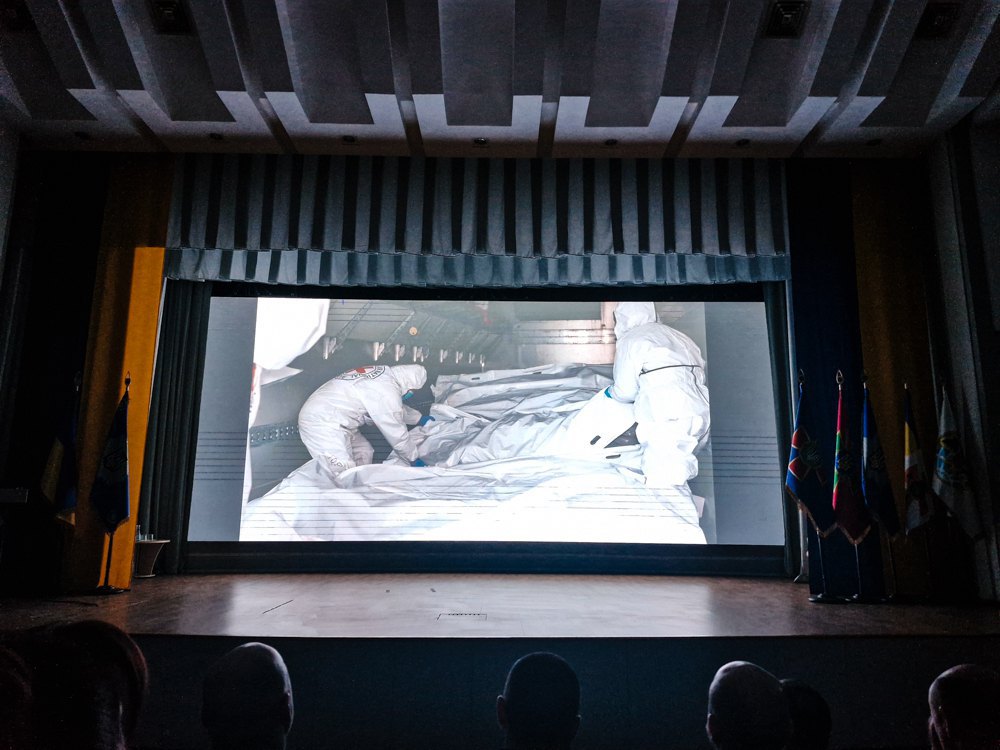
'But the body was... They convinced me that there was nothing to see there. Then why the military ID card, as good as new?
There were more questions. Anna began to persuade the morgue worker to show her the body until he gave in.
'They took me behind the building to the refrigerated trucks, and there they put a package on a couch. From the outline, it seemed to me that the body itself was intact. But they showed me again only his arm. I asked: ‘And the body?’. ‘Why are you messing with my head? It's yours according to the documents. Take it.’
Anna repeated that she could not do that.
'Here you go, take it. It's not yours... It seems like they didn't care who I was burying. The man was getting irritated: ‘What do you not understand, here is a tattoo’. But it was all baked, in blood, in the ground, with maggots. Yes, I could see something, but I still couldn't make out the drawing itself. Then the man took a knife and threw off the maggots, saying: ‘Now do you see?’.
Anna was not shown photos of her clothes either. But they had bought Oleksiy's uniform and custom-made boots - she would have recognised them. In the end, they took out a gold cross.
'When I said that my husband had a silver one, an hour later they brought out a silver one and showed it to me at a distance. It was similar in shape to Oleksiy's, but with a chain. The man had broken it the day before. We also agreed that I would take it to be sealed when he came home.
Then Anna refused to take the body without a DNA test.
A long wait
Today, the electronic register of human genomic information, which was launched in 2023, contains more than 160,000 DNA profiles. Of these, more than 90 thousand belong to relatives looking for their loved ones. 16 thousand are unidentified bodies of the dead.
On the one hand, families who have received a notification of a missing loved one should contact the police. The investigator opens criminal proceedings, and the relatives submit biological samples for further DNA profiling. On the other hand, after repatriation measures, search missions, and evacuations from the contact line, the body or remains of the deceased are taken to the morgue of the forensic medical examination bureau. The investigator opens criminal proceedings, after which the work of the forensic expert begins. In the process, the body is examined, its condition is recorded, photographs are taken, documents or other belongings of the deceased are checked, fingerprints are taken, and samples are taken for DNA analysis. Meanwhile, the investigator orders molecular genetic testing and sends them for examination. In 95 per cent of cases, the Expert Service of the Ministry of Internal Affairs is involved.

At the beginning of the great war, it joined this process with 9 full-fledged molecular genetics laboratories, which at that time employed about 250 experts. The tenth was to open in Mariupol, but it was destroyed in the first days of the attack. Some laboratories began to shut down due to the shelling of border towns, and units faced migration of people, some experts were mobilised, which created a major problem - a shortage of staff. According to Ruslan Abbasov, deputy director of the State Research Forensic Centre of the Ministry of Internal Affairs, they lost a third of their specialists almost immediately for one reason or another.
By the end of 2022, all nine laboratories, plus the tenth in Mykolayiv, which became fully operational after the evacuation, resumed their work and coped with the workload as best they could. Obviously, the system was not ready for that scale. This affected the duration of the examinations, which the family still calls one of the biggest problems.
So, at first, we set about solving two problems: finding the missing specialists and expanding the possibility of DNA testing for the relatives of the victims to all regions. The laboratories had to be equipped with automated rapid DNA identification systems that allow for the examination of genetic material of relatives, and recruit at least three geneticists for each.
When this was implemented, new challenges arose.
If in 2023 the laboratories had to test 15,000 samples of relatives, in 2024 there were about 60,000.
Currently, 14,000 of them remain untested. A year ago, the centres analysed about a thousand samples of relatives per month, and now it is 7,000.
- What worked in 2022 does not work in 2023. What we did last year does not work this year. Because the situation is constantly changing, it is influenced by many external factors, starting with the situation on the battlefield, which is reflected in the number of samples that come to us from relatives. And we have to adapt to each day,’ says Ruslan Abbasov.
The current situation with the relatives' samples is expected to be stabilised within 2-3 months, in order to eventually reach the one-month timeframe for the examination.
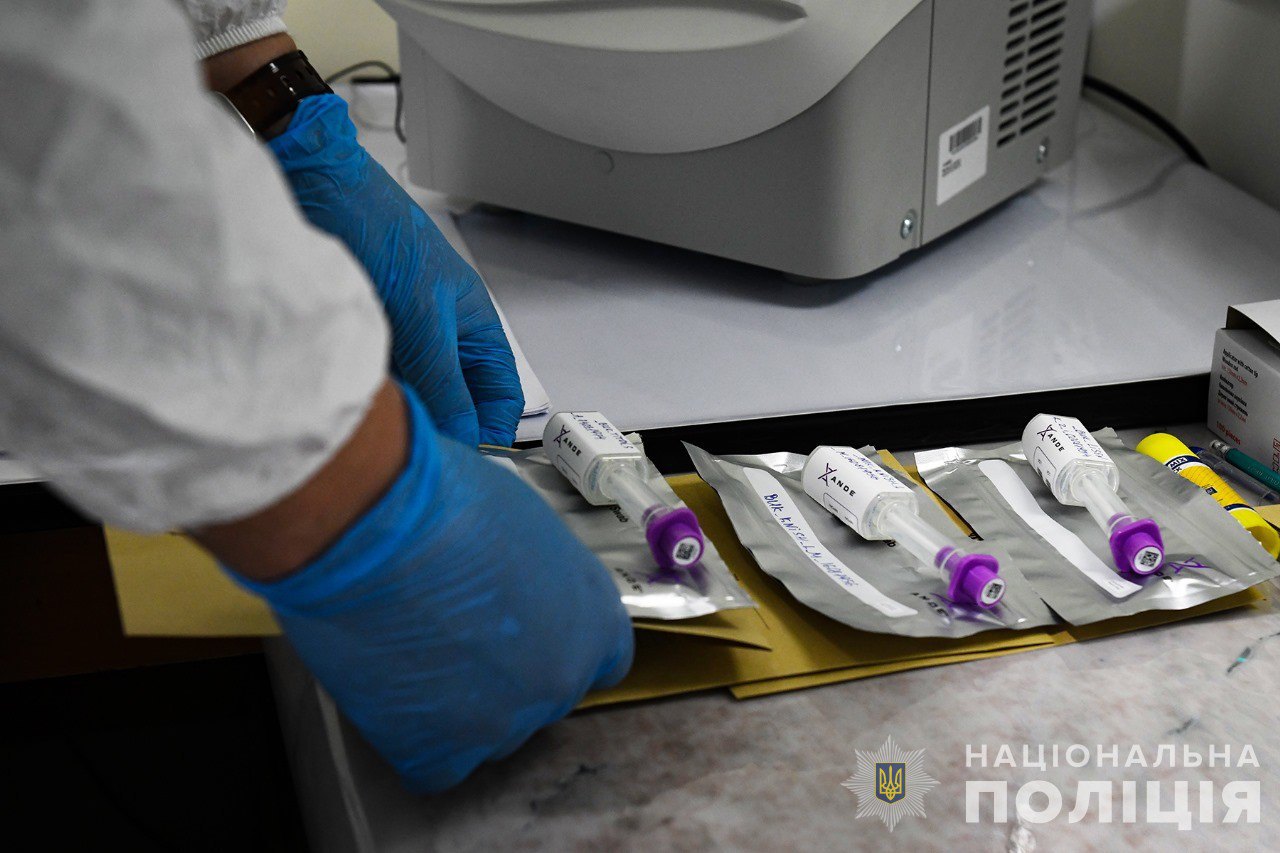
Rapid DNA identification systems that work with material from living individuals do not require special conditions; they need 2-3 people as operators. And here the main difficulty is in their training. Another thing is the creation of additional full-fledged laboratories that examine the full range of biological material from samples of a living person to samples of remains - bone, teeth or from clothing, objects, etc. Such a laboratory needs a 300-500 sq m space, zoning, a certain ventilation regime, air purification system, equipment, the cost of which is about UAH 30 million. Plus 10-15 specialists.
Over the past two years, eight such laboratories have been opened in the system of the Ministry of Internal Affairs Expert Service, so there are currently 18 in the network. Last year, they examined samples of 10,000 unidentified bodies. By the end of 2025, full-fledged laboratories should be available in all regions. Prior to that, 100 specialists have joined the staff of the units over the past six months. However, there is still a shortage of hands.
‘There will be no less work, regardless of how the situation develops further at the front,’ explains Ruslan Abbasov. ‘You can see that the number of bodies of Ukrainian defenders that are being brought home as part of repatriation activities is also increasing. And God willing, these processes will continue.
In total, since the beginning of the full-scale invasion, 76 repatriation events have taken place, bringing home almost 8,000 bodies. And in the last 5 months alone, 3,500 dead soldiers have been repatriated. And here, even the mere extension of the dead Ukrainian soldiers' transfer is already a manipulation used by Russia, explained Andriy Yusov, a representative of the Defence Intelligence of Ukraine, at the screening of the documentary Return. Heroes on the Shield. The longer the body is in different conditions, the more difficult it is to establish the circumstances of death and conditions of detention, in the case of prisoners of war.
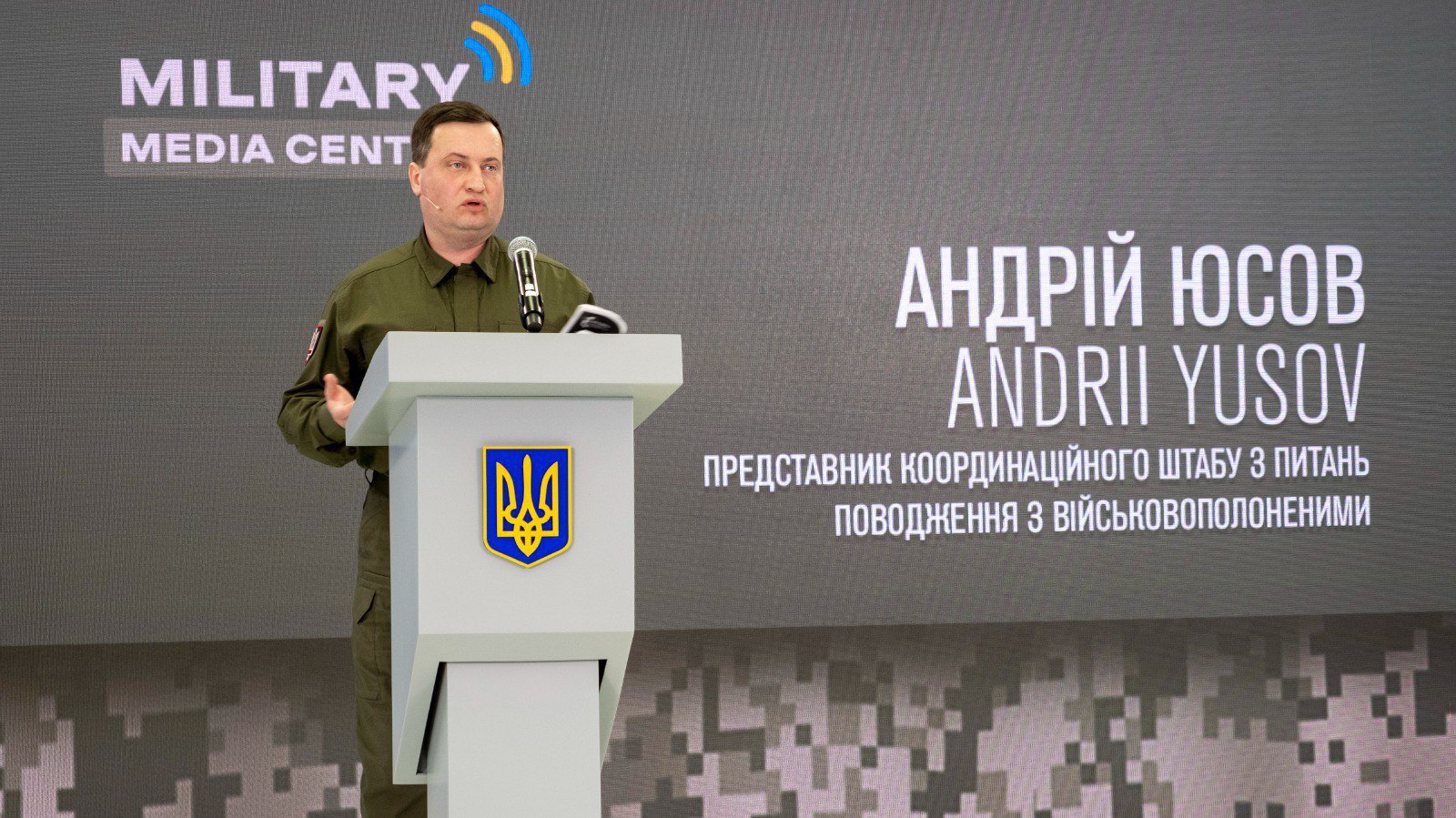
This also affects the subsequent identification and its timing. Bodies arriving at morgues can be in different conditions - with severe putrefactive changes, burnt. And these are the most difficult objects, because in such cases DNA is destroyed. Sometimes the bodies are very fragmented.
'And it is necessary to make an examination of each fragment received, realising that it will not always be one person, but perhaps the remains of different bodies collected in one package. Or another situation: it is handed over as one body, but for some reason there are remains of other people. That is, the time frame does not always depend on our desire or resources. Sometimes it's just a complicated, long work,’ explains Ruslan Abbasov.
If we take the most difficult cases out of the equation, then on average, DNA examination of biological materials from the body of a deceased person now takes 1-3 months.
'Ideally, we would like to meet the one-month deadline. That is why we are creating full-fledged laboratories, trying to quickly complete the processes related to training and staffing of specific units to keep their workload within reasonable limits,’ says Ruslan Abbasov.
According to Olena Belyachkova, coordinator of the groups of families of prisoners and missing persons at the Media Initiative for Human Rights, our experts, having already had extensive experience in dealing with complex cases, conduct all these examinations at a high level, and this is confirmed by the International Commission on Missing Persons.
'Unfortunately, this is not enough,’ she says, ’because we still lack human resources. It is impossible to quickly train a person to become a specialist in conducting examinations to identify the body of the deceased. In the end, we have a heavy workload for one specialist. Moreover, in complex cases, several types of examinations may be carried out using several approaches, including the involvement of an investigator and repeated sampling of the body of the deceased. It is clear that all this affects not only a particular case, but also the timing of other examinations.
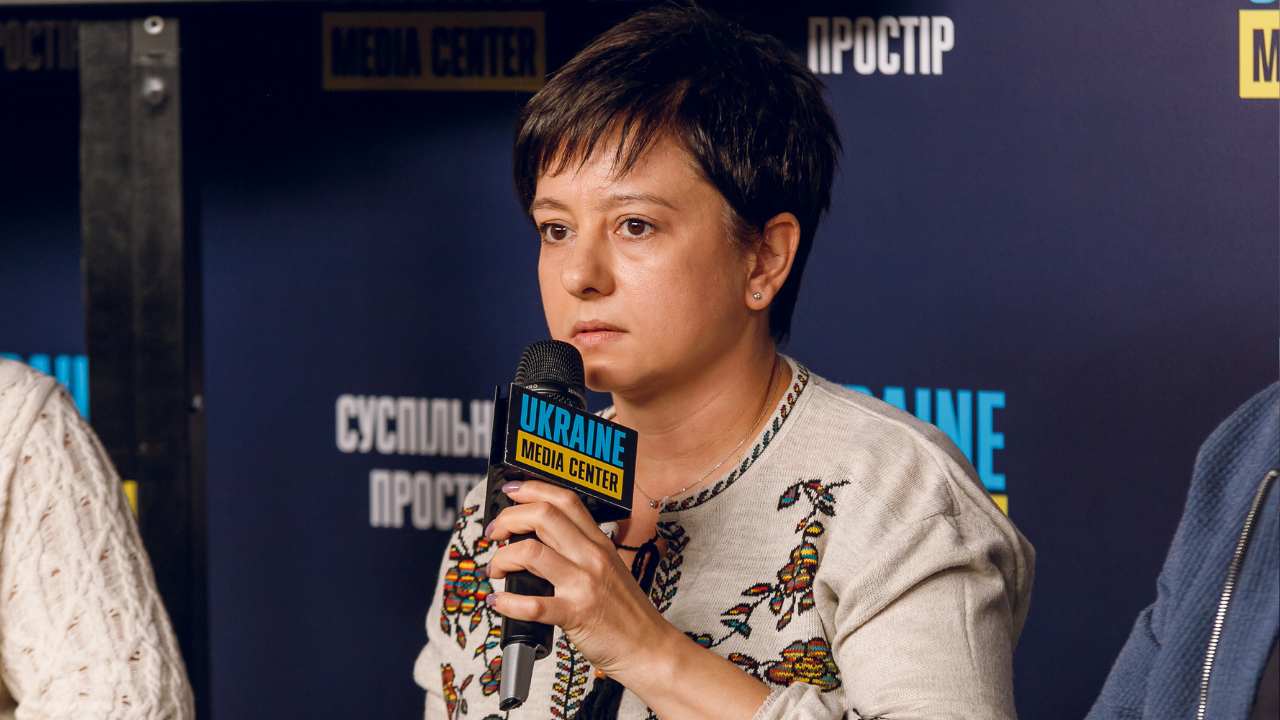
In her opinion, the service could be at least partially relieved if the International Commission on Missing Persons were more involved in the examination process. Moreover, since the end of last year, according to Olena Belyachkova, there has been an agreement that they will be able to freely transfer the DNA profiles they have extracted to our register of human genomic information.
Two relatives, two methods
After the expert geneticist completes the work with the sample, a record of the genotype of the deceased, established during the study, is placed in the electronic register of human genomic information. Then it is checked for a possible match with the DNA profiles of relatives. It usually takes from several days to several weeks between establishing a DNA profile and checking for a match. If there is a match, the State Scientific Research Institute informs the investigators - the one who initiated the examination of the body and the investigator who ordered the examination of the relative's biological material - by letter.
Ruslan Abbasov explains how a preliminary match works.
'It's like a thread. We have DNA samples of relatives in our database, and at the same time we receive DNA profiles of unidentified bodies. A preliminary match occurs when the programme, using certain mathematical algorithms, has recorded a possible combination that the DNA profile of an unidentified body may be related to someone from the family.'
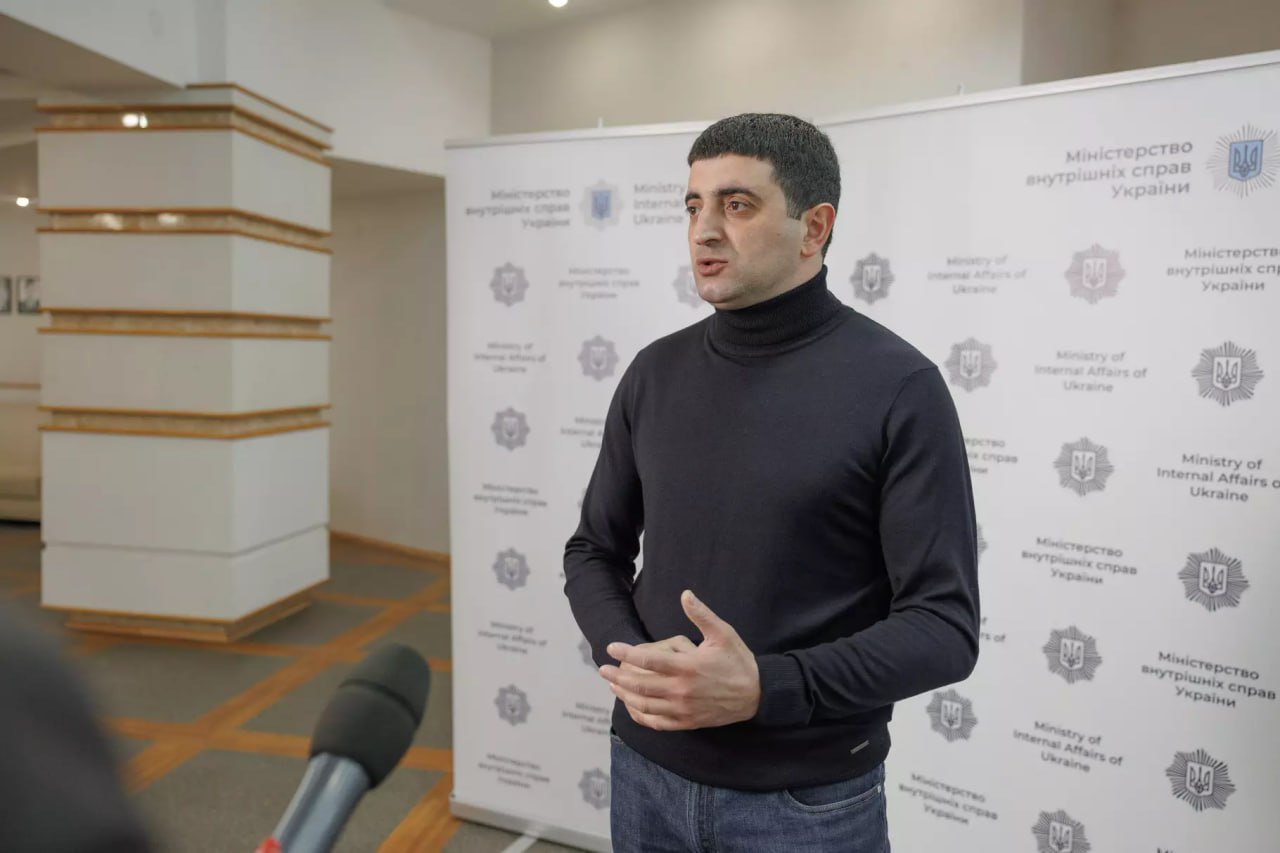
But this is not the final answer.
'Let's remember: a child inherits half of the chromosomes from his father and half from his mother. That is, when there is a match, say, for one of the parents, it is only a clue. And the investigator, in tandem with experts, has to refine it, either by other investigative actions (checking clothes, a badge, analysing a dental record) or by additional expertise to confirm or refute the identified probability,’ explains Ruslan Abbasov. ’And the expert capabilities today are such that there is no problem in identification if there is this clue. The issue is time and workload. Because any system can be put down. The only issue is the simultaneous amount of materials for research.
It is the letter from the administrator of the electronic registry that contains a recommendation on the next step, in particular the use of comparative molecular genetic examination, which must be appointed by the investigator. Only after the conclusion of the comparative expert and the match is found, he draws up a resolution on the identification of the deceased, which is sent to the morgue, and the head of the department of forensic medical examination of corpses sees that it is necessary to prepare the body or remains for delivery and burial.
And there is a very important point here. According to modern standards of DNA examination, it is enough to examine samples from two relatives to identify the body. Or you can go the other way and analyse the biological material of one relative of the first degree of kinship (father, mother, daughter or son) using two methods. The latter means that both nuclear autosomal DNA testing and comparative analysis by sex X chromosome, if it is a mother or daughter, or Y chromosome, if it is a father or son, can be used. The second mechanism has been available in the Ukrainian laboratories of the MIA's Expert Service since last year.
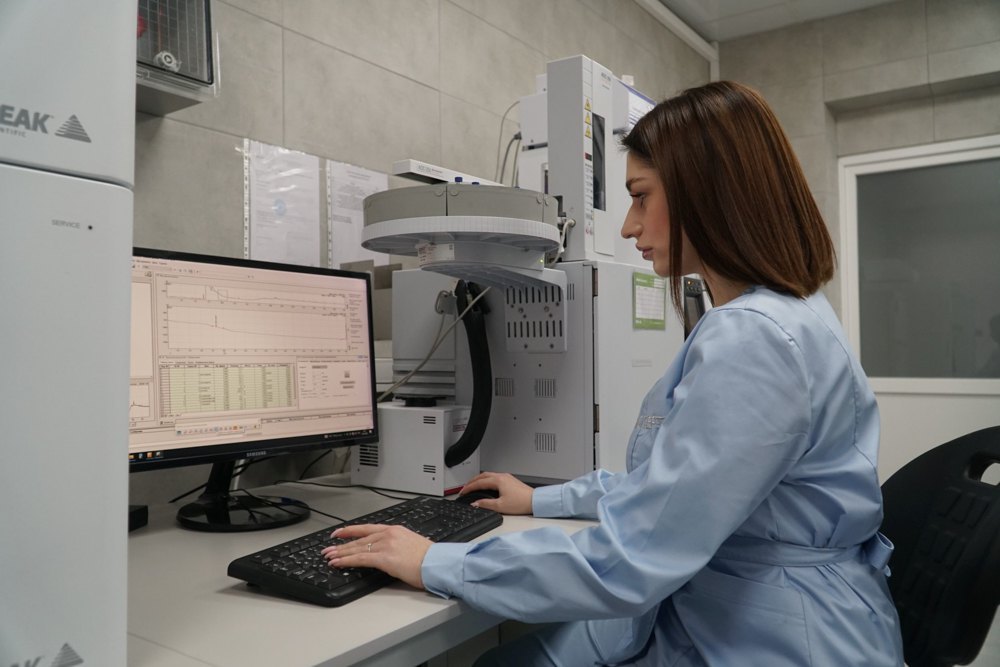
In fact, this has opened up additional opportunities to reduce the time and cost of the identification process. However, for various reasons, due to ignorance or because the information is not received in a timely manner, relatives panic and submit samples en masse, plus bring personal belongings. And instead of one or two samples, we have to test 6-7. And this happens in a third of cases.
Currently, the problem is being solved through negotiations with relatives. But the investigator, even if he can explain the intricacies of DNA testing, cannot always refuse relatives.
'They insist, they say they don't believe. And it's understandable, they want to be sure. There are also manipulations on the part of relatives who have misunderstandings with each other because of some financial interest. We also need to talk about this openly. That's why there is such a struggle here, on the one hand, to reduce the time for examination, and on the other hand, to submit as many samples as possible. And we are in the middle,’ says Ruslan Abbasov. ’We communicate with investigators, with our institutions, with NGOs at joint events so that everyone is competent at their level. Because simply not accepting samples is not an option either, you need to explain. So you can't just say: ‘The examination takes a very long time’. We have to say it is a long process, because it happens in this way and in that way. There is also a human factor, as elsewhere, but this is definitely not a massive story.
Identification by lifetime samples taken from military personnel could change the situation. This possibility is provided for by law, but in practice it is only partially implemented. Although this could reduce the duration of the examination by 3-5 times.'We have had cases when we worked with lifetime DNA samples of servicemen, which were stored by units on fta-cards (paper treated with chemicals that protect the samples from damage and destruction - LB.ua). ‘But this is not a common phenomenon,’ says Victoria Chernyak, who heads the Department of Forensic Examination of Physical Evidence at the Dnipro Regional Bureau of Forensic Medicine. ‘This is one of the institutions in the forensic system that has been conducting DNA testing independently since 2014.
'A large number of samples from relatives of a missing soldier does not affect the result, but overloads the system as a whole. ‘I see the difficulty in the fact that not everyone understands this yet,’ she says, ’as well as whose samples are useful in a given situation. For example, if we are talking about samples from two relatives, it should be one of the parents and the child of the deceased, or a parental couple. And if there are no parents, then the child and the spouse of the deceased.
The ideal situation does not always correlate with reality. But then we need to take into account various aspects of genetic expertise. For example, the identification of deceased men based on the samples of their sisters has its own specifics, explains Viktoriya Chernyak. ‘In this case, the results will only be obtained by comparing mitochondrial DNA, which is inherited through the maternal line. This is a more expensive study, more complex and time-consuming.
Or, for example, a man goes to the police and reports his brother missing. Then the police officer, when taking a sample for further DNA testing, must know that the only method of research in this case is DNA analysis of the Y chromosome. And if he does not indicate in the decision that this is a biological sample of the missing brother, or if the institution to which he sent it for examination does not perform research on the Y chromosome, then the genotype that is established will be useless.
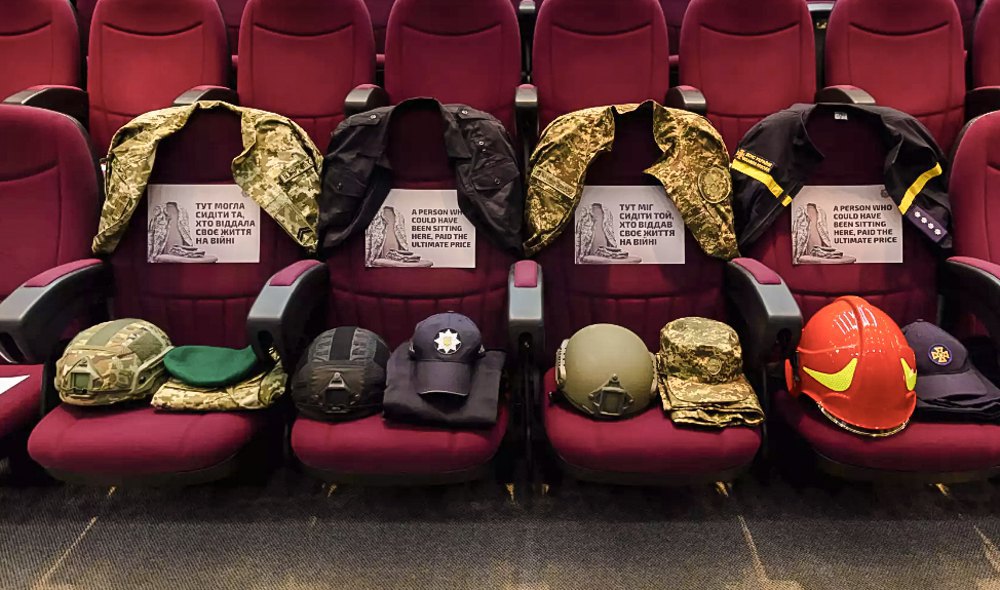
It seems that Anna's case is one of those that got into the statistics when something went wrong.
A fair examination
In the autumn of 2023, Oleksiy's mother and sister submitted samples for DNA testing. In April 2024, the investigator informed the family about the maternal DNA match. And then the story took an unexpected turn - with the body in Kramatorsk. At least that's what the investigator told Anna.
'And I received the decision on the match for the body in Dnipro.
We can only assume why this happened. But everything became completely confusing.
The second time Anna was brought to the morgue in Kamyanske, when the body was brought there from Dnipro. The situation repeated itself: the woman was shown a hand with a tattoo.
'I managed to get them to show me at least her hand. It was so small, and my husband is tall and healthy. I mentioned this. In response, I heard: ‘I'm a pathologist, I've been working here for 20 years, and you came to tell me. ' And again, she said, ’It's yours, even if you shoot yourself.
In the end, Anna wrote a refusal to be buried.
'I want to get a fair examination. Especially since I could not find out anything about the body in Kramatorsk for a very long time. Everyone pretended that no one had mentioned it, convincing me that I had made a mistake. I went to the military enlistment office, told them what the investigator said about the two bodies, and they said to me: ‘Are you crazy?’
She also found out that the DNA profile of her husband's sister was not in the register of human genomic information. So, for three months, with the help of a lawyer, they sought a second examination. The sister submitted the samples for DNA analysis again in July 2024, and since then they have been waiting for the results.
‘The lawyer contacts the investigator, and he says it's not ready yet,’ Anna explains.
In total, over the past year and a half, five investigators have been involved in the case. According to Anna, you have to look for the new investigator's phone number yourself, the investigators either don't explain anything or send you to the TRC or the military unit to find out. In the military unit, they send you to the investigator. And there is no end to this ping-pong.
Investigators and families
In a moment of complete despair, another wife of the missing defender, Tetiana Trisvatko, came to her aid. Tatiana managed to find information that confirmed that there were indeed two bodies with different numbers - one in Dnipro, one in Kramatorsk, but with the same documents - Oleksiy's.

She acknowledges that although the situation with forensic examinations has improved, there are still different situations.
‘We had cases when a body was in the morgue for almost a year, and the families knew nothing about it. I attribute this primarily to the human factor,' says Tetyana, ’because only the investigator who is in charge of the case can inform the family about the DNA match. At the same time, there are a lot of cases, some are faster, some are slower.
Compared to the pre-war period, their workload has tripled. This figure was announced by Deputy Interior Minister Leonid Timchenko. Currently, the police are investigating 70,000 criminal proceedings into the disappearance of both military personnel and civilians. This work involves 2,000 investigators. So the maths is simple: 70,000 divided by 2,000.
'But there are also cases of outright negligence, when an investigator forgets to inform the family that there was a match and that they need to take the body and bury it. This is also a fact,' says Tetyana.
‘Therefore, the organisation draws the families' attention to the fact that they need to control everything and keep in touch with the investigator about the progress of the investigation and examination.
‘We still have unidentified bodies from 2023, from the beginning of 2024, for which comparative examinations were not ordered after previous coincidences,’ says Staff Sergeant Olha Kravchenko, who is responsible for working with the families of prisoners and missing persons in the Third Separate Assault Brigade, ‘Or, for example, the examination is ready, but the investigator does not issue a decision. It is very difficult to explain this. And we can only periodically write inquiries wherever we can to remind them. There are cases when the bodies were evacuated in intact condition and we expected the examination to take 2-3 months, but a year has passed and there is still no result. Although during this time, bodies have already been handed over from repatriation events in poor condition and there are matches. Fortunately, such stories are in the minority, but these are indeed very problematic cases, painful for families. So, probably, the question here is primarily to the investigator.
Many procedural issues are tied to him, which makes him one of the key figures in the identification process. It is clear that a lot depends on the investigator's actions. To begin with, how the biological materials were taken, where, what documents accompanied them, and which expert institution they were sent to. As the Media Human Rights Initiative writes in an analytical note, the loss of DNA materials before they reach the laboratory is one of the most common problems faced by families. The same can be said about investigators' violations of the rules for taking samples. Both entail repeated submission of the samples and, accordingly, delay the identification process.
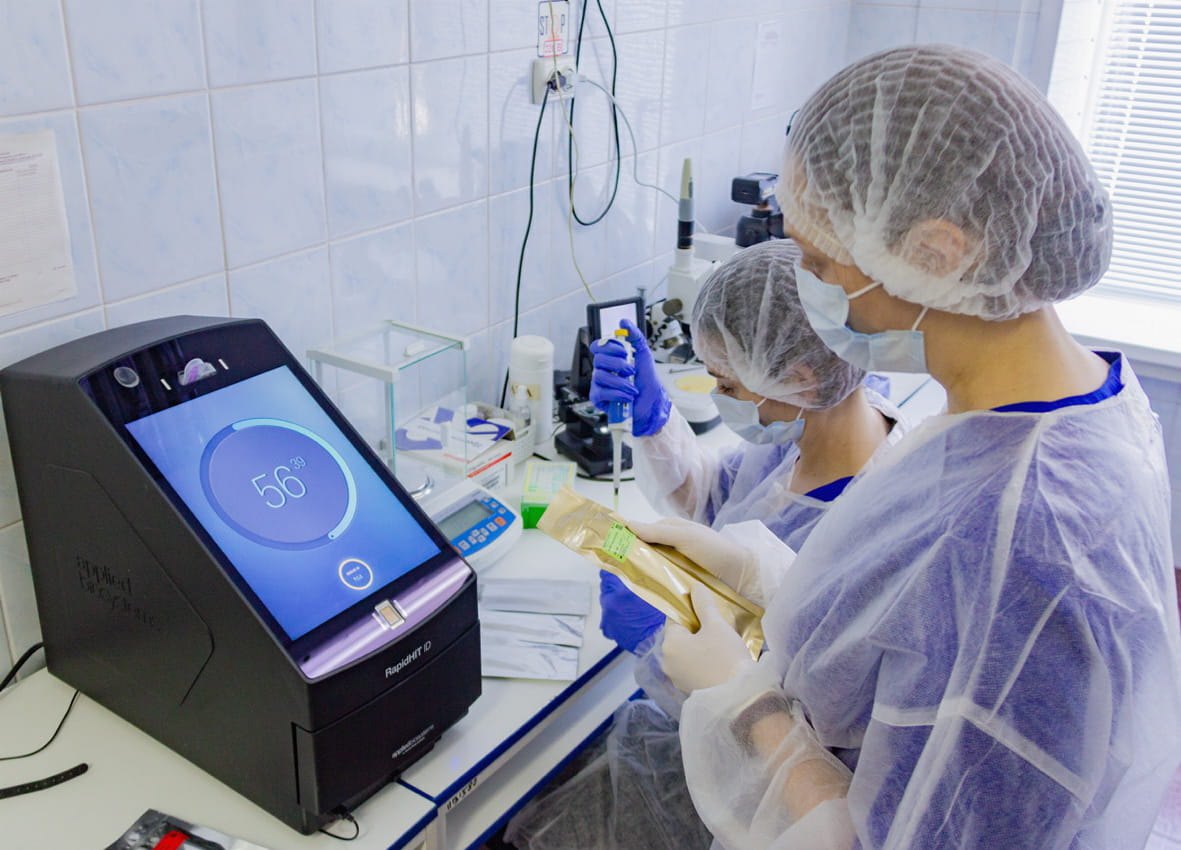
There are cases of discomfort between investigators. Olena Belyachkova gives the following example. The investigator who opened the proceedings on the missing person and had already transferred it to the investigator at the place of disappearance under territorial jurisdiction, informed the family of the fact of a preliminary match. The family tried to contact the investigator in charge of the proceedings on the deceased's body, but could not, and only two months later he informed them of the DNA match and asked for additional biological material for comparative examination. This should not have been the case, because the investigator in charge of the case of the deceased's body should have informed the family of the need to take additional DNA samples after receiving the results of the initial examination, and not two months later.
‘Naturally, the family was outraged by such a long wait,’ says Olena, ‘but you should understand that in the course of work, there are cases of long paperwork, obtaining all the necessary signatures, and this may explain the delay. And investigators must act clearly: not just the person who has found out the information and, for whatever reason, decided to inform the family, but the person who is required to do so by law, must communicate with the families. Of course, the situations are different. There are families who say they have good communication with investigators. There are families who complain. It is clear that the investigators are overworked, especially those who work in Donetsk, Luhansk and Zaporizhzhya Regions. But no one has cancelled the human touch.
The amendments to the Criminal Procedure Code of Ukraine, which stipulate that criminal proceedings will remain at the place of filing a missing person's report, i.e. where the relatives of the missing defender are, should simplify communication between families and investigators. Since December last year, a separate decision has been in force stating that proceedings opened from 10 December 2024 will not be transferred under territorial jurisdiction to the regions where the disappearance was recorded.
At the same time, the question immediately arose as to what would happen to the cases that had been opened before that date. According to Olena Belyachkova, a possible step is to petition the Prosecutor General's Office to return them to the investigator at the place of the family's appeal. Moreover, if they are, say, in Kramatorsk or another settlement near active hostilities, there is a risk that these materials may not be preserved. But so far, families have been denied such requests.
Patronage service
'Imagine that a total of nine authorities are involved in the search for missing persons, not just the police. ‘And the family has to keep in touch with all of them, provide information,’ says Tetyana Trynadsyatko. ’It's no wonder that something gets lost, distorted, misinterpreted. That's why you have to write appeals everywhere, check whether everything is entered in the register, whether there are any mistakes, whether several criminal proceedings have been opened, and if so, you need to combine them into one case, find out who is looking for the defender, whether he is recognised as a victim in the case. There is a lot to do.
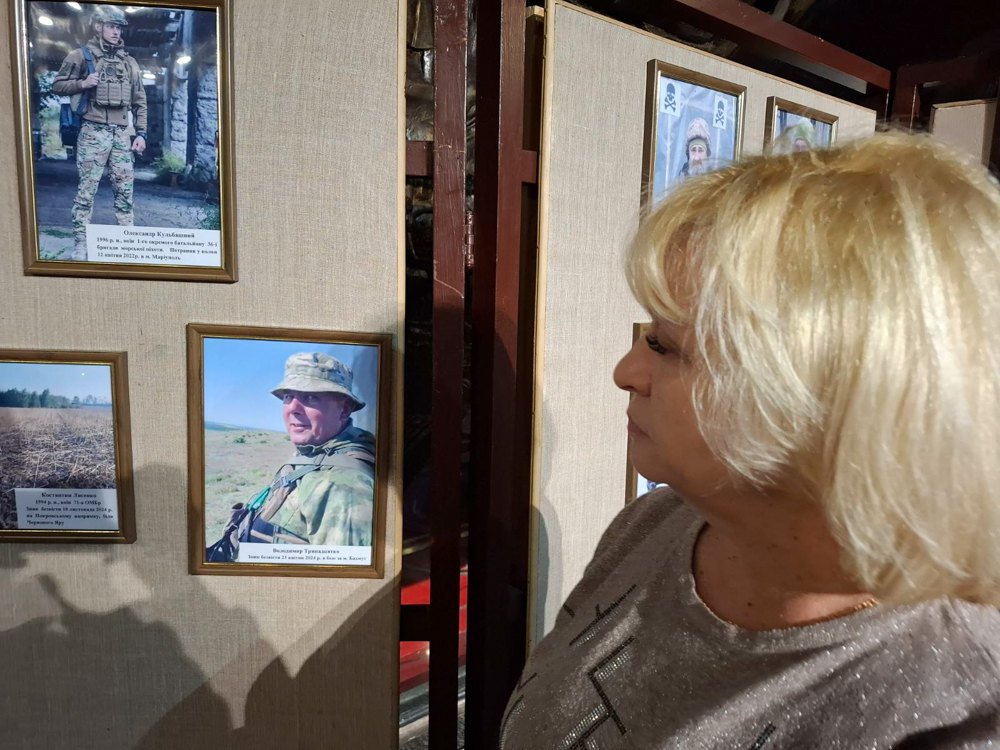
Now it's a little easier, she admits, because the brigades are forming patronage services to help families resolve issues.
'They work in different ways because each position is filled by real people. Someone is more competent, someone less, someone already has experience in this work, someone is just learning,' says Tetyana.
In our case, says Oleksandra Mazur, the patronage service took away a lot of the most traumatic things from our relatives.
Like everyone else, Oleksandra learned about the attack in Olenivka from the news. Yaroslav Otrok, her family member, served in an engineering platoon of a separate special forces unit of the Azov National Guard. Together with his comrades, he was among the defenders of Mariupol. He was taken prisoner of war from Azovstal. That's how he ended up in the Olenivska colony, where an explosion occurred in a barracks with Ukrainian soldiers on the night of 29 July 2022.
Then Oleksandra found Yaroslav's name on the list of wounded published by the Russians. Until October, when the bodies of the Azovs killed in the attack were returned, she searched for him in Russian telegram channels, watched pseudo-interviews and videos of those who survived that night.
It was already known at that time that several people had died on the way to the hospital. Oleksandra learned that Yaroslav might be among them from a soldier who had returned from captivity.
‘He said that Yaroslav was most likely dead because he had injuries incompatible with life, but he was taken to the hospital alive by car,’ she says.
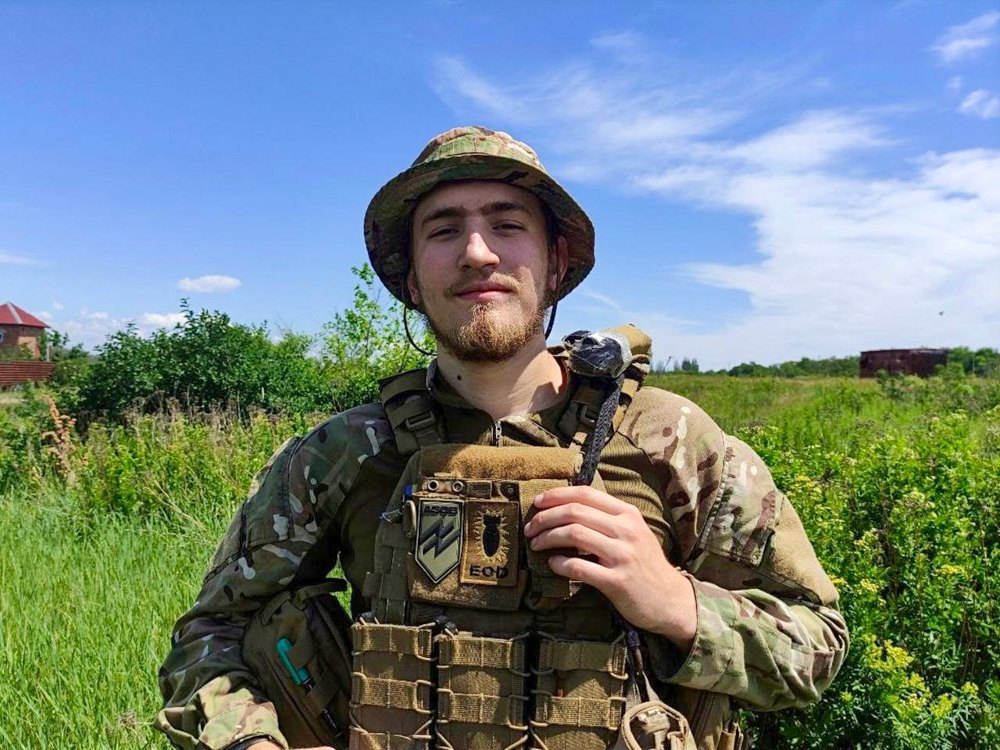
When the bodies were returned to Ukraine on 11 October 2022, Oleksandra immediately contacted Azov's patronage service. Yaroslav had a tattoo on his arm and she sent a photo, asking if there was a body with one. And then Yaroslav's mother went to the identification and confirmed that it was most likely him.
‘We were still waiting for the DNA test, although our situation was a little different than the others,’ says Oleksandra.
‘In most cases, it was simply impossible to identify the body visually without DNA analysis. In fact, the examination of the returned bodies of the defenders lasted until the summer of the following year, as a result of which the names of 54 dead were identified. Most of them were buried in 2023, but a few more families were waiting for an additional international examination that confirmed the results of the Ukrainian one.
'Perhaps this is a way of grasping at one more straw - what if another examination shows that a loved one is alive somewhere.
I know many families of the victims. And when there is at least some hope, they continue to believe.
—
Ihor Prokopenko was the last to be buried in September 2024.
‘The family was in a very bad psychological state at the time,’ says Oleksandra. ‘It doesn't get any easier with time, but when there is a final answer, one learns to live with it. And while there is no answer, it's just terrible. This uncertainty is terrible. And then the examination lasted quite a long time. And there were constant accusations that the authorities were hiding something from you, which is why it took so long. Relatives are in a very vulnerable state, attention is focused on the story itself, so the Russians, as always, parasitised on this.

‘In general, it's great that such a service is now mandatory in all units. In our case, they took care of a lot of things so that I didn't have to deal with them - how the bodies were received and stored. We were minimally involved in the processes related to the collection of all kinds of documents. I like the way they worked then. They did everything ethically. And since these services are now developing, I think it is important that there are specialists there who are ready to immerse themselves in the topic of death, negativity, and maximum moral and psychological stress.
Support for families
When a family receives a report of a missing person, the Third Assault Brigade's patronage service takes over and, to the extent possible, participates in the identification process. For example, it collects clues that will help identify the deceased. At the same time, the team has a responsible officer who goes to the evacuation point, takes the bodies, and examines them.
'If he cannot identify the deceased himself or has doubts, he sends us photos and together we look for who it could be. For example, the unit knows that a body was taken from the position where our soldiers disappeared, but we don't know who it was because there were several of them,’ explains Olha Kravchenko.
‘Then the patronage service monitors the information about where the body was taken. And depending on which morgue it was taken to, they instruct the families on the next steps. In general, the actions of the patronage service always depend on the situation, and the circumstances are very different. If the relatives do not want to communicate or are not available, then they contact the police themselves to open a criminal investigation and hand over the deceased's belongings for DNA testing.
We try to ensure that all the unidentified people are identified and buried.
Or there are cases of remote identification when the family is either abroad or unable to come. In this case, the patronage service collects all the information from the family, special signs, and passes it on to a representative of the team, mostly logisticians who transport the bodies. And they communicate with the investigator directly on the spot.
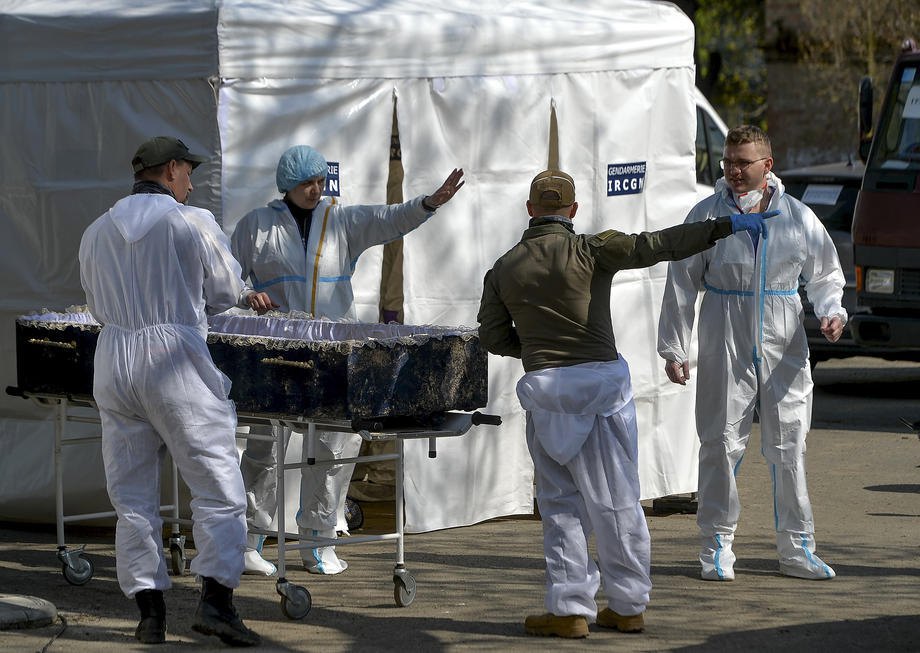
The family is also prepared for what to expect at the identification. They are instructed that they will only see photographs. In the photos, relatives can also see personal belongings, uniforms, and documents.
'But we always emphasise that it is the body, not the objects, that should be identified. Because we often hear from relatives: he always carried a passport in combat, so let them identify him by his passport. But it doesn't work that way. There were cases when a fighter died, and a fellow soldier who could not evacuate him took his passport and phone. And then he died and these documents were found on his body. This often happens, for example, in exchanges. That is why we cannot identify the deceased only by the passport, military ID card found on him, or a cross, even if it is special. We need to explain this to each family. Some understand it immediately, others do not quite understand the chaos that is happening on the contact line. And then you need to explain it again and again.
Even with special signs, there can be special situations in practice. One of the obvious ones is that the tattoo pattern cannot be seen for one reason or another. Sometimes, forensic experts even remove a layer of skin with a tattoo that has been severely wrinkled and stretch it to make it visible. But this is not done in morgues with a large influx of bodies. And then the relatives wait for DNA testing. Or, for example, fighters take the same sketches from the Internet and end up with either identical or almost identical tattoos.
'That's why I always say: if you have the slightest doubt, then take a DNA test. Because the worst thing is to bury the wrong person. Of course, there are also cases when the body of the deceased has, for example, unique colourful tattoos, there are many photos, but the family is probably still not sure because of their emotional state. ‘In general, the work of identifying the bodies of the dead requires you to explain every step, absolutely all procedures, and it is important to answer all questions. In my experience, there are a lot of them. Some people, for example, worry that the bodies will be buried or cremated without their knowledge. And you need to explain that this cannot happen.
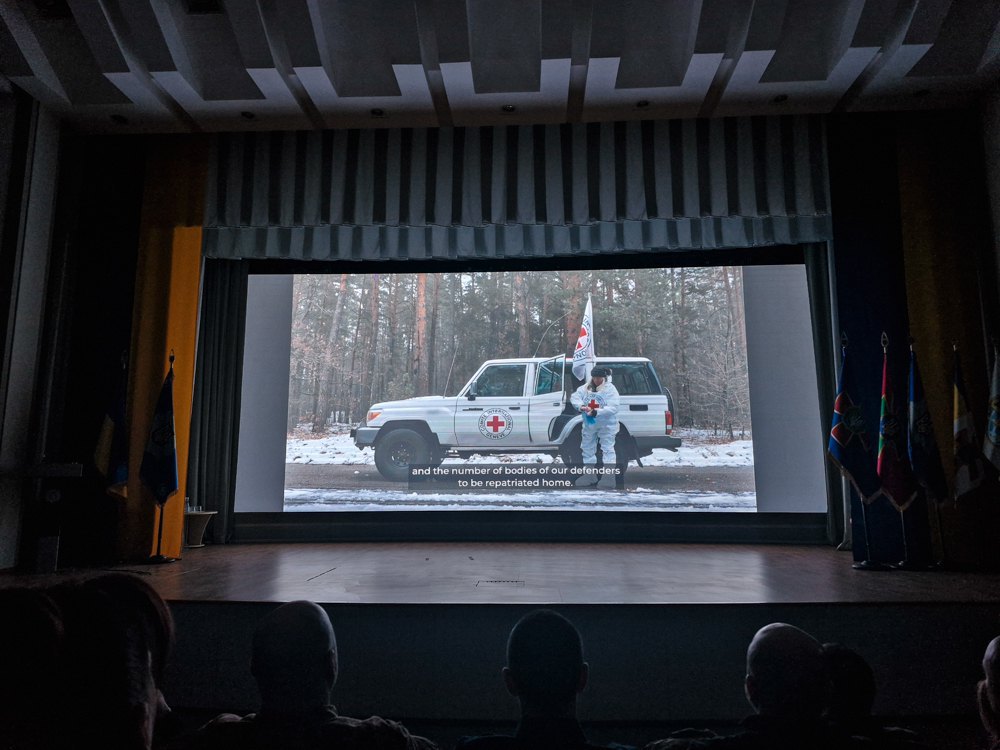
'From what I see, people usually try very hard, but everyone is overwhelmed. And some misunderstandings or mistakes happen mostly because of this, not because they are bad.
And to be fair, there are also completely different situations on the part of families. Some people cannot recognise their loved ones because of trauma, and they shut themselves off.
'And this is not because the person is scandalous. ‘Sometimes relatives just don't respond,’ says Olha, ’because it's a bigger loss than they can bear. For example, the father says he won't do anything, so it's impossible to complete the identification of the body. This can also happen because of certain mercantile interests. Relatives make payments and simply say: ‘No, it's not mine. I'm not going to give DNA’. Then the investigators can still get it done. Or when relatives who refuse to donate DNA come to the TRC to re-issue their allowance, military commissariats refuse to accept the documents until they bring a police report on the donation of biological material. All this again requires human resources. And there is a lack of it.
At present, there are no matches for 5-6 thousand unidentified bodies of the dead that are in the register, according to the SICEC. Since there are various reasons for this - perhaps the victims have no relatives, or, as mentioned, relatives do not submit DNA samples for one reason or another, or the samples are still being processed - this figure is not a steady one.
However, of course, the most difficult cases are when the body was either not evacuated or is in the occupied territory, Olha Kravchenko admits.
And it is unknown how much longer the family will live in the mode of waiting and hoping.
P.S.
Tetyana Trynadtsyatko has been living like this for almost two years. Her husband, Volodymyr, went missing on 23 April 2023. Just before leaving for the positions, he was transferred from the 58th Brigade, where he had served since the beginning of the full-scale invasion, to the 93rd Brigade. Tetiana was worried about whether he would be issued with a bulletproof vest and helmet. He wrote: ‘The armour has been issued’. That was his last message. On 1 May, she received a message that Volodymyr had gone missing.
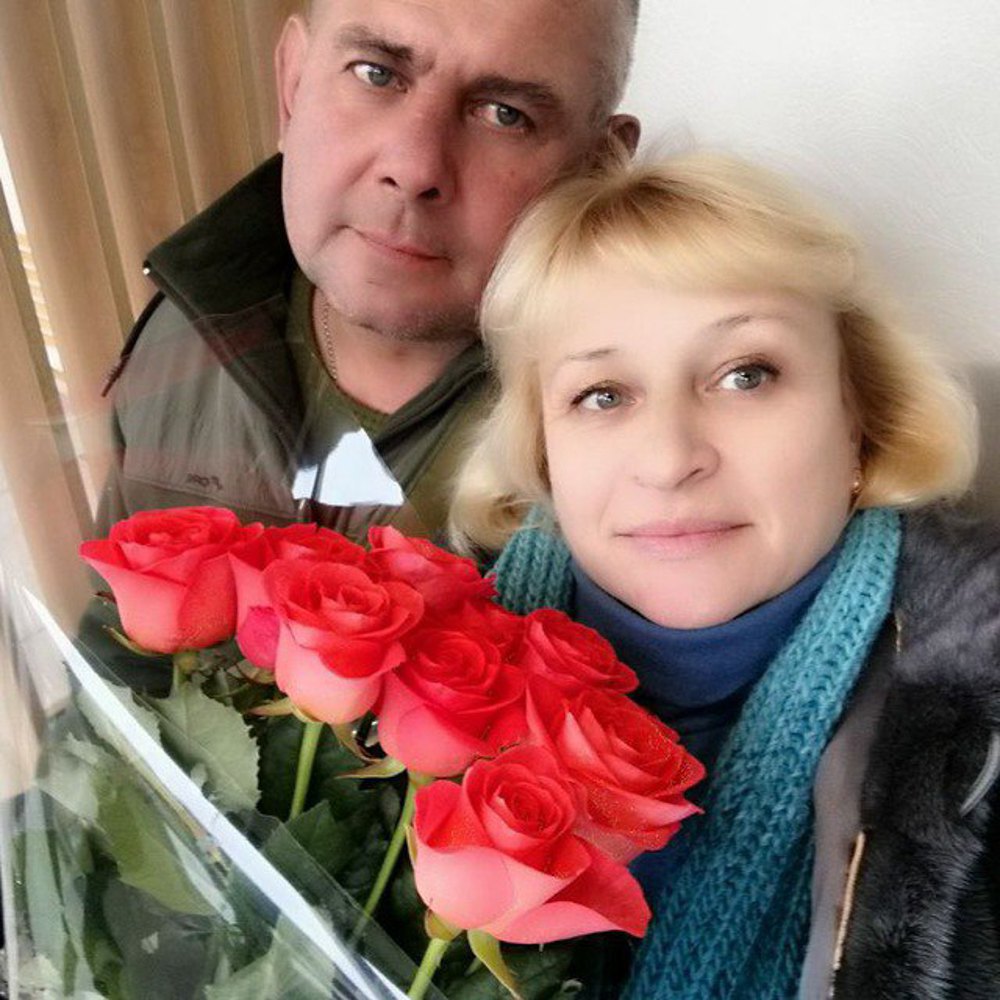
Eleven defenders disappeared along with Volodymyr. No one knows for sure whether they were taken prisoner alive or whether they were all killed on the position. But two weeks after the disappearance, Tetyana saw Volodymyr's military ID card in the Wagnerian telegram channel. For her, this is hope.
Despite the fact that she has already received a response, Oleksandra Mazur continues to participate in the work of the Olenivka Families community.
'The terrorist attack in Olenivka was the first mass execution of prisoners of war since the beginning of the full-scale invasion. It was a kind of statement by the Russians - here's what we can do and what you will do about it. You see, they did not respond. And the Russians are just systematically killing prisoners, executing them openly. And for me, talking about Olenivka means somehow attracting the attention of the international community and somehow, perhaps, protecting other prisoners. I believe in this.
Meanwhile, Anna is trying to find out where her husband's body is.
'Imagine how I live... No one believes that this can happen. Wherever I go, they look at me like I'm crazy. And I don't know where else to shout to get things sorted out.








